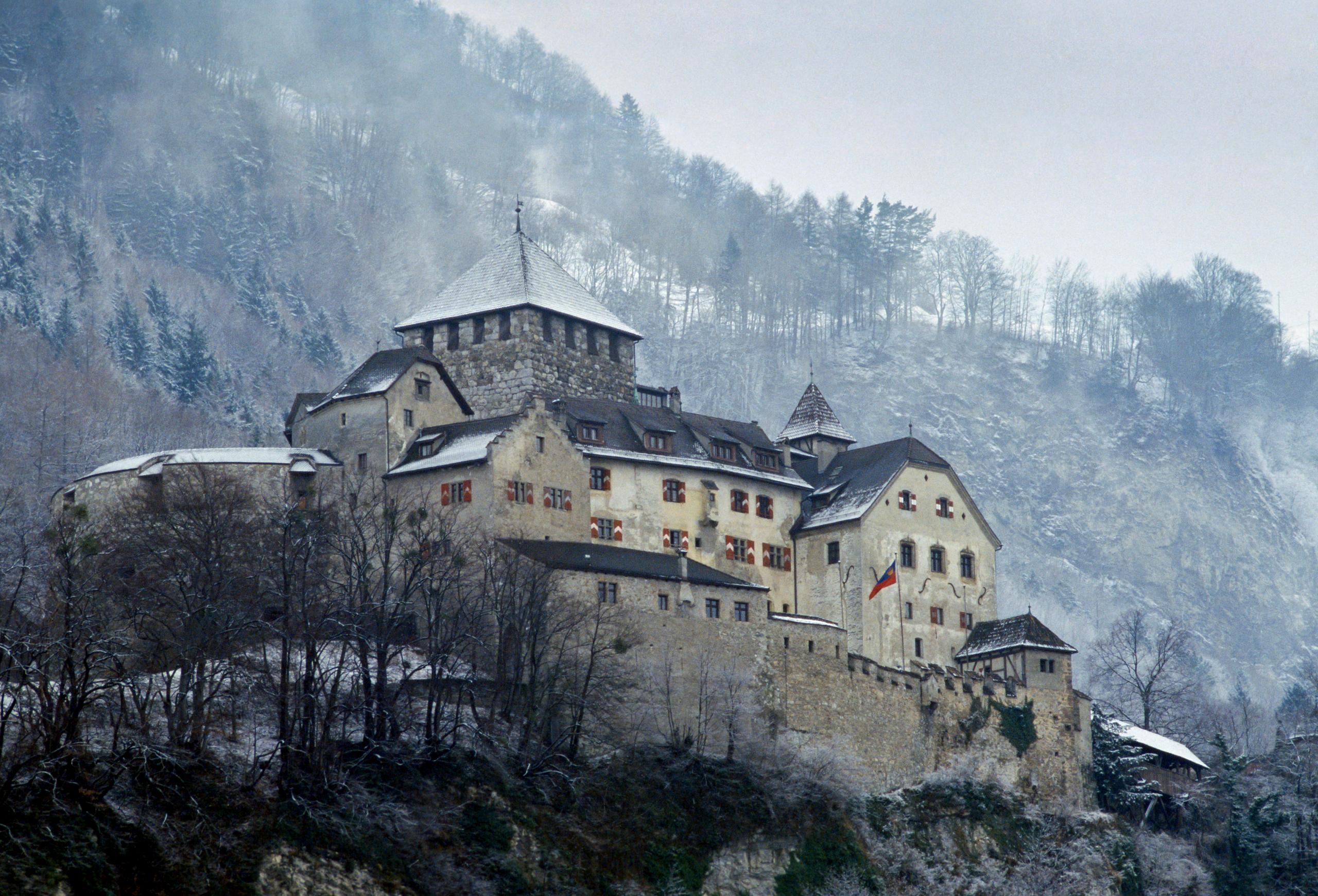Good neighbours: Liechtenstein turns 300

The Principality of Liechtenstein is marking its tercentenary. But 2019 is also 100 years since its rapprochement with Switzerland. Since 1919, links have been so close in certain areas that one could almost consider Liechtenstein a Swiss canton.
On January 23, 1719, Holy Roman Emperor Charles VI united and upgraded Vaduz and Schellenberg to the rank of imperial principality under the aegis of the Liechtenstein dynasty. This date marks the birth of the sovereign state of Liechtenstein, even if the principality didn’t technically become an independent state until the fall of the Holy Roman Empire in 1806.
Wednesday’s commemorations mark the triggering of a series of events that will be held throughout the year.
“This jubilee is not only the chance for the residents of Liechtenstein to reflect on their history, but also to attract the attention of many tourists and visitors,” the principality said on its website for the festivitiesExternal link.
Liechtenstein was very close to the Austro-Hungarian Empire throughout the 19th century. But after the empire was defeated in the First World War, Liechtenstein moved much closer to Switzerland, starting in 1919. One hundred years later, links between the two states remain very close.
Diplomatic missions

After 1919, the two countries signed a treaty stipulating that Swiss embassies and consulates would represent the interests of Liechtenstein in countries where the principality does not have representation.
Today, Liechtenstein, which has a population of around 38,000, has eight diplomatic representations (Berlin, Bern, Brussels, Geneva, New York, Strasbourg, Washington and Vienna) as well as in the Vatican.
Currency union

Switzerland and Liechtenstein are very close economically, having shared a customs union since 1923. But the most striking example of the relationship is the use of the same currency. Liechtenstein officially adopted the Swiss franc in 1924.
The two countries are also part of the European Free Trade AssociationExternal link (EFTA) with Norway and Iceland. It should be noted, however, that the principality is closer to the European Union than Switzerland, having joined the European Economic Area in 1995, something Swiss voters rejected in 1992.
Integration in Swiss organisations

Links are also very close when it comes to sport. FC VaduzExternal link plays in the Swiss football league – currently in the second division – and there is close collaboration in the promotion of sport and the training of young athletes. Liechtenstein, for example, is part of the Youth+SportExternal link programme.
More generally, countless Liechtenstein institutions are integrated into Swiss umbrella organisations, similar in status to a canton. Take for example the Association of Public Unemployment Insurance FundsExternal link or the Coordination of FirefightersExternal link.
Immigration

The foreign affairs ministry says that at the end of 2016 more than 3,600 Swiss were living in Liechtenstein – not counting dual nationals – so more than 10% of the local population. What’s more, half of the principality’s employees are cross-border workers, with 55% commuting in from Switzerland.
There is, however, no risk of colonisation, since Swiss immigration is limited. A maximum of 12 authorisations to carry out “gainful activity” and five residence permits are allocated a year to Swiss citizens.
No army

The two countries also share a strict neutrality, which was respected during the two world wars. Liechtenstein is one of some 30 countries without an army. In the event of an emergency, the law can force every adult under the age of 60 into action.
But there’s slim chance of that ever happening. For decades the only real threat facing Liechtenstein has been … clumsiness on the part of the Swiss army! The most serious incident took place in 1968, when the Swiss artillery accidentally lobbed five grenades into the principality. No one was injured.
(Translated from French by Thomas Stephens)

In compliance with the JTI standards
More: SWI swissinfo.ch certified by the Journalism Trust Initiative









You can find an overview of ongoing debates with our journalists here . Please join us!
If you want to start a conversation about a topic raised in this article or want to report factual errors, email us at english@swissinfo.ch.